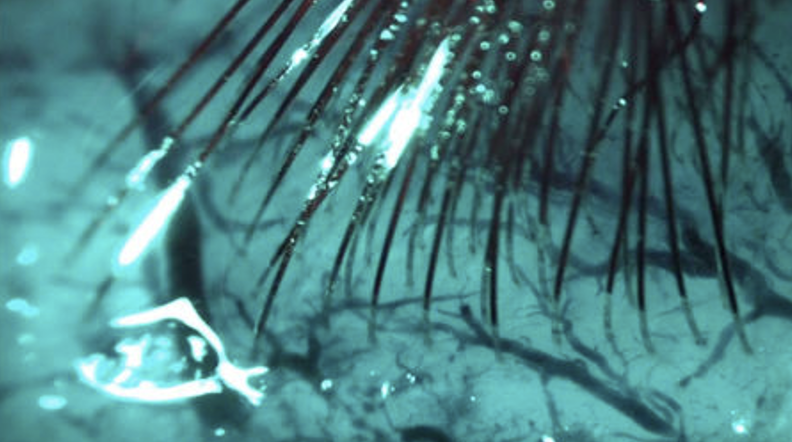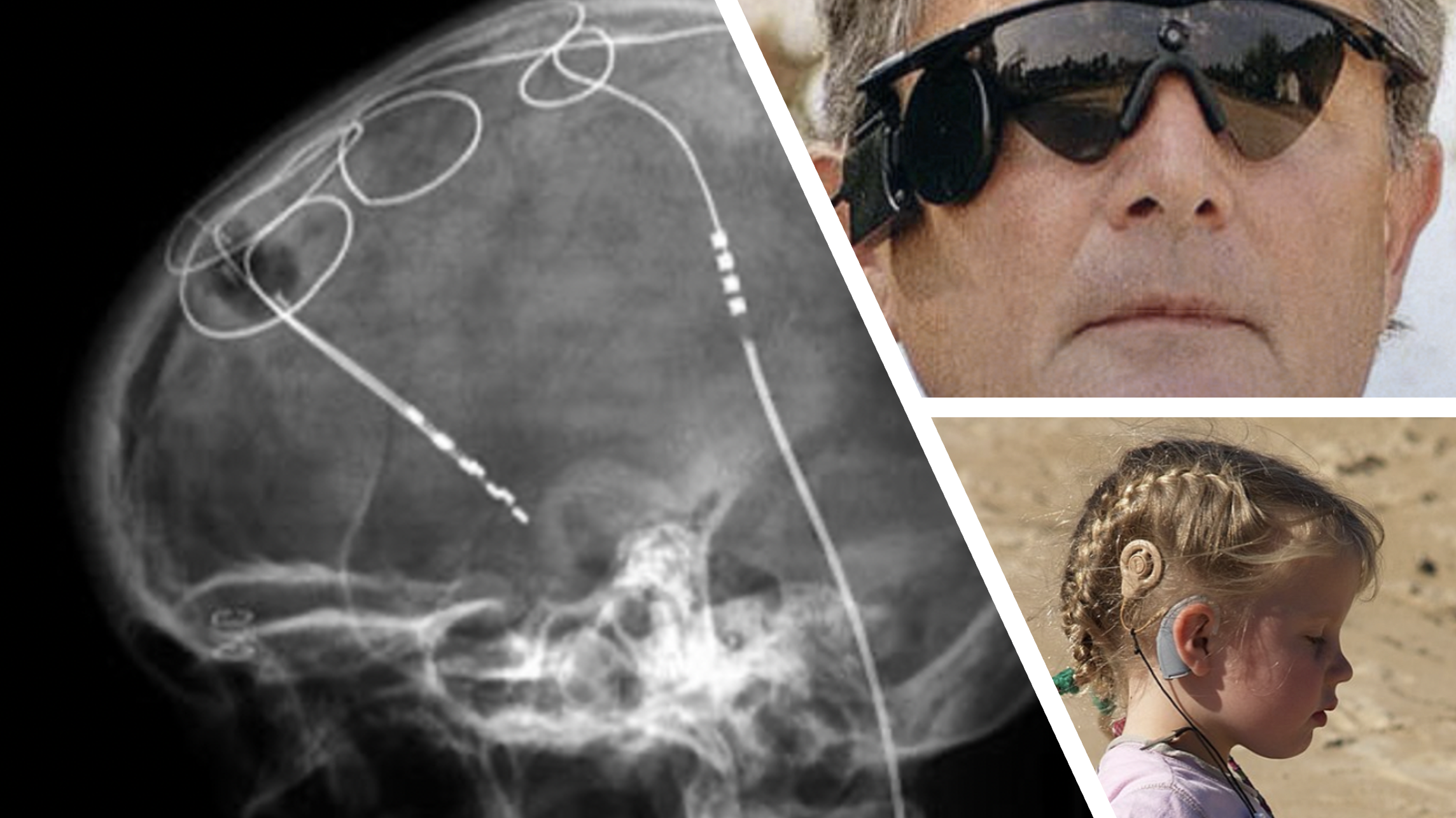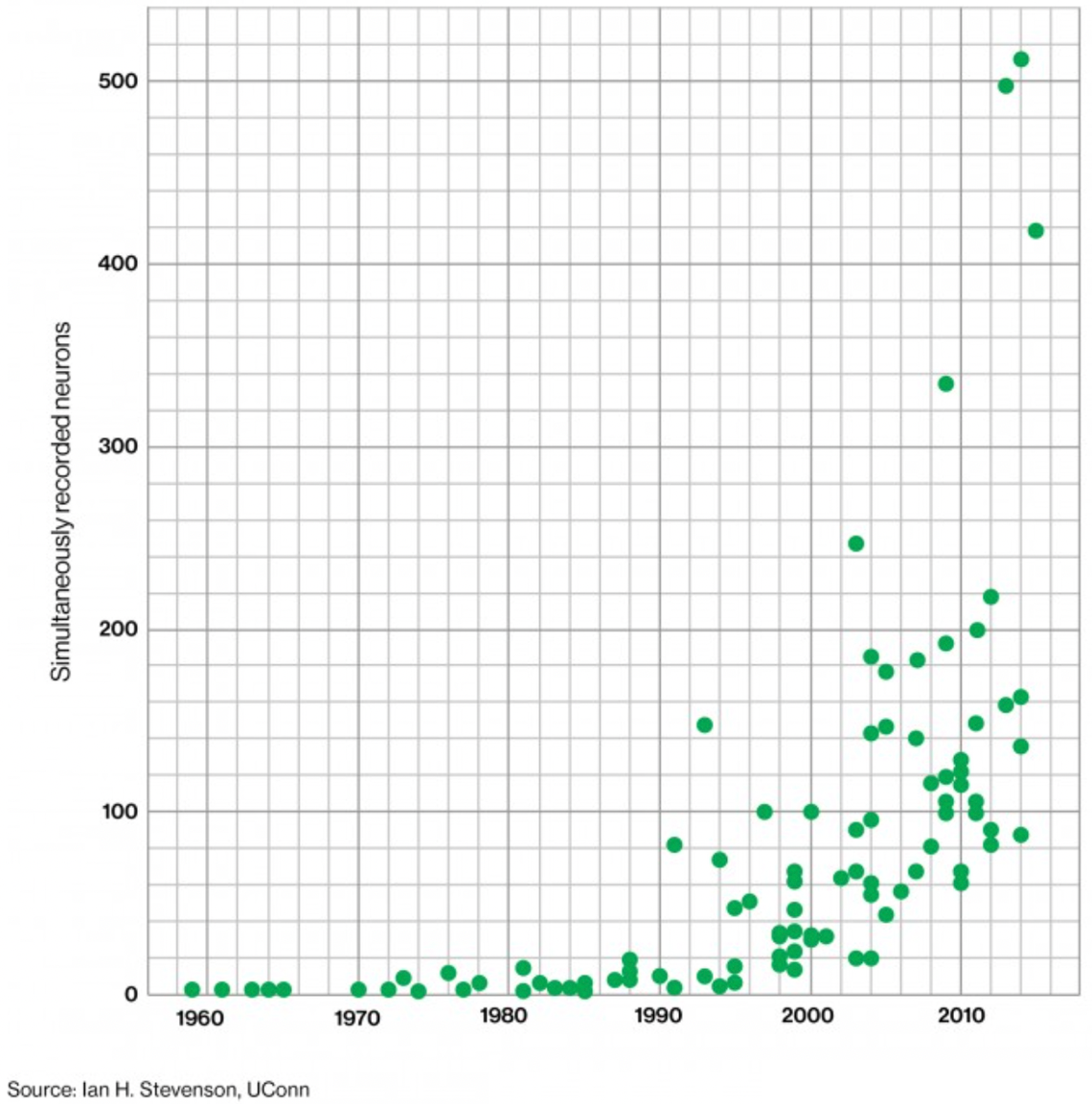
Accelerating The Journey Into The Brain
They send and detect signals a million times smaller than those controlling your smartphone. AI software filters millions of seemingly random strains of neural chatter to discern chords of neural activity.
The most fascinating worlds lie both cosmically distant and intimately close. The recently activated James Webb Space Telescope will reveal how galaxies are formed and peer back in time to when the universe was just 100 million years old. We will perceive these fantastic discoveries inside our minds. Our brain, our inner space, is also ripe for accelerating discovery and opportunity.
In a significant move toward human trials Neuralink, Elon Musk’s brain-computer interface (BCI) company, is hiring a clinical trials director. They plan to implant the most sophisticated array of neuron-to-computer connections ever created into human brains. It has more than twice the number of connections than any previous brain probe and will reveal sharper details of brain functions and neural processes.
Exciting explorations deliver unexpected discoveries. We don’t know what knowledge and solutions Neuralink will find. However, its revelations could help numerous persons with disabilities including paralysis, blindness, and even learning disabilities to enjoy greater independence and fuller lives.
The bad news, or good news depending on your point of view: BCIs won’t meld our brains with an AI any time soon.
Neuralink’s Technology Convergence
Neuralink’s high-density probe array stimulates neurons and reads the signals transmitted among them. Neurons are your brain’s basic building blocks; their faint electrical and chemical communications create your reality. There are many other BCIs, but none with Neuralink’s density and mass producibility.
The company’s system is a technology convergence marvel. A robotic needle one-third the width of a human hair pierces the cerebral cortex six times per minute to insert probes only twice as thick as spiderweb silk. A vision system guides the needle to miss the tiniest blood vessels. A chip in a package the size of a fingernail connects to hundreds of probes driving a total of 1024 neuron-interfacing electrodes.
They send and detect signals a million times smaller than those controlling your smartphone. AI software filters millions of seemingly random strains of neural chatter to discern chords of neural activity.

We Know That We Don’t Know
Noted neurosurgeon and author, Dr. Henry Marsh, said in a 2019 interview, “Everything we are thinking and doing is generated by the activity in our brain, but we really don’t know how."
It’s not that our brain is a total mystery: we know a lot about what we don’t know. We know that words, either read or heard, are partly translated back into thoughts (whatever thoughts are, physically) in a lump of cortex behind our ears (usually the right ear for left-handers like me and the left ear for right-handers). How the translation happens is a mystery. We know where expressions on others’ faces create bursts of understanding and emotion (lower rear area of the cerebrum), but not how those expressions become feelings.
New generation of direct brain connections always offer new capabilities and insights. For example, in the late 1970s, 20 electrodes in cochlear implants gave functional hearing to persons with deafness. In the mid-2000s, 100 to 200 connections let persons with paralysis move robotic limbs and experience touch. What will Neuralink’s 1024 connections bring?
What Will The Next Generation Discover?
The company’s own website notes enabling persons with quadriplegia to control computers and mobile phones. “Later, as users get more practice and our adaptive decoding algorithms continue to improve, we expect that users would be able to control multiple devices, including a keyboard or a game controller.”
Critically, a core Neuralink strategy is making the system available to as many qualified research and therapy centers as possible. Musk points to Lasik’s high availability and low cost as the goal for neural connection implants. Neuralink aims to create a platform, accessible to thousands of labs worldwide to allow humanity’s collective colossus of curiosity and industry to explore our inner space aggressively.
Not So Fast: Stevenson’s Law
Implanting sophisticated electronics inside humans isn’t new or unusual. It’s a trend that has grown since the first implanted cardiac pacemaker in 1958. Today, doctors can augment patients with cochlear implants for hearing, retinal arrays for sight, and deep-brain probes to quell Parkinson's tremors. The number and quality of implantable connections keeps growing.

Homo sapiens' cortex, our thinking center, has 10 to 20 billion neurons. Neuralink’s 1024 electrodes won’t leap us from sensing rudimentary sight and sound to spiritually bonding with an AI partner in the cloud. It may take not 10X but 1 billion times, or a million times the number of Neuralink’s connections, to realize that futuristic vision. And there’s the big problem: the growth rate for neural connections is so slow that no one alive today will be around to see it happen.
Ian Stevenson and Konrad Kording plotted out the number of neurons that could be recorded with the best equipment available spanning the late 1950s to the mid-2010s. It's an exponential function (no surprise there), and the number of neurons recorded doubles every 7.4 years:

“Stevenson’s Law” is neuroscience’s version of semiconductors’ famous “Moore’s Law.” If Neuralink’s first human trial happens in 2024 with 1024 electrodes, it will be right on schedule.
7.4 year doublings means that to record all 10 billion neurons in our cortex, which is 21 more doublings of Neuralink’s 1024, we’ll need another 155 years.
Suppose “only” 1 million computer-to-neuron connections are needed, 11 doublings: Stevenson’s Law will get us there 84 years from 2024. As Kording said in 2016, “We’ll all be dead before we can record even part of a mouse brain. That’s not cool….Everyone in neuroscience wants to see Stevenson’s Law die.”
A Moore’s Law pace, where doublings take just 18 months, would get us to 10 billion connections by 2057. Elon Musk will be 87, and if it's available on Mars, where he plans to be living, he'll be an early adopter.
Physical Probes Are Only the First Generation
Heavy hitters in neuroscience, including the United States Defense Advanced Research Projects Agency (DARPA), are spending big money to make Stevenson’s Law go away. That money and the gravitas of Elon Musk’s investment and marketing are igniting intense activity.
In computing, the progression from punch cards to relays to vacuum tubes, transistors, and integrated circuits has given us 125 years of exponential growth. Similarly, probes with electrodes will first inspire and then be supplanted by something new and bizarre.
We don’t know whether the ultimate brain-computer interface will be “neural dust,” nanobots attached to neurons, or neurons genetically modified to react to light. Back in 1895, when the U.S. census was done with new-fangled, hand-operated punch-card tabulators, no one even dreamed about silicon microprocessors.
Zooming Out
Elon Musk has some big BCI goals, “We will be able to save our mind’s state, like a video game. We’ll be able to decide if we want to be downloaded into people or into robots.”
Noted futurist and computer scientist Ray Kurzweil has long predicted a brain/cloud merger via nanobots. "They'll go into our brain through the capillaries and basically connect our neocortex to a synthetic neocortex in the cloud, providing an extension of our neocortex.”
Some experts have even more audacious visions. For example, a multinational group of 18 neuroscientists recently described the goal of connecting humans brain-to-brain to have “Transparent Shadowing.” Then, “…individuals might experience episodic segments of the lives of other willing participants (locally or remote) to, hopefully, encourage and inspire improved understanding and tolerance among all members of the human family.”
That’s a 21st Century take on walking a mile in someone else’s shoes.
Ironically, skilled human communicators read other people's emotions with a wordless glance. Maybe a near successor to Neuralink will unveil how they do it.
“Words without a sound, coming from your eyes.”
~Sister Hazel
In the meantime, there will be abundant opportunities. For example, a billion people struggle with a learning disability. Also, 1.7% of the US population and by extension 1.7% of the global population, 130 million people, live with some form of paralysis.
Solutions that safely and cost-effectively improve their quality of life will have a big enough market to be interesting for new business ventures. Now is the time to scan for innovations to deliver those solutions.
Zooming In
In February, the Webb Space Telescope took its first picture: a selfie. Then its gaze turned to the heavens and captured an image of a star. What views of our own brain’s inner universe will Neuralink’s 1024 sensors and AI algorithms reveal? Keep a close watch on BCI projects; the impact possibilities are countless.
Cover Image:
Photo by Milad Fakurian on Unsplash
Rochus Hess, Attribution, via Wikimedia Commons

ExO Insight Newsletter
Join the newsletter to receive the latest updates in your inbox.









